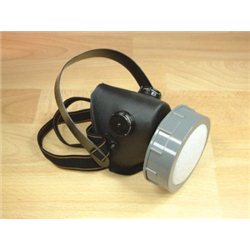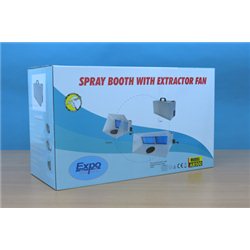In model railways, 2FS refers to 2mm Finescale or 2mm Scale Finescale. This is a specific modeling standard and scale...
No products
Product successfully added to your shopping cart
There are 0 items in your cart. There is 1 item in your cart.
Search Tips
End of year opening times
If you select next day delivery, please note deliveries are not made on New Year's Day.
The shop in Sandown is closed on New Years's Day and closing at 2.30pm on New Year's Eve.
Tuesday 30th: 10am to 4.30pm - Wednesday 31st: 10am to 2.30pm - Thursday 1st: closed - Friday onwards: 10am to 4.30pm.
How can I safely use an airbrush?
Airbrushes use compressed air to atomise paint which is then delivered through the airbrush onto the subject model. Although most of the paint from the airbrush will go on the model, there will inevitably be paint that ends up elsewhere. This unwanted paint is generally referred to as 'Overspray'. There are two types of overspray, the first type is visible on the surfaces around the model. The second type is perhaps less obvious and that is the overspray that remains in the air. During long airbrushing sessions this can build up in the air and as such is an inhalation hazard. To guard against the first type it is advisable to wear protection on the hands such as disposable nitrile gloves. Ideally, these should be non-powdered so they do not leave an unwanted residue on the model. When using strong solvents or enamels these offer protection from absorption of hazardous substances through the skin.
Protection against airborne overspray can take a variety of forms. It is ideal to spray outdoors to ensure good ventilation, admittedly this is not always possible. If spraying indoors it is helpful to have a room with some form of extraction device. One of the easiest ways to achieve this is to fit a modelling spray booth, this utilises an extraction fan with an exhaust hose to safely remove a significant amount of overspray from the work area. The added benefit is that it will also help to remove hazardous fumes from paints and solvents. Although this is a very useful tool it cannot be relied upon to remove all fumes and overspray. As such it is very good practice to wear some form of filtration mask whilst spraying. A simply dust mask or equivalent will offer some protection against overspray but will offer negligible protection against fumes. Ideally, it is highly advisable to use a mask that offers high filtration protection to protect from fumes and vapours and has filters that can be removed for cleaning. A P3 rating is a good benchmark for regular airbrush users. The filtration level of these masks offers excellent protection from both overspray and harmful fumes.
A good way to think about this is can you smell it? If the answer is yes then you are breathing it in!
Click here to receive the tips weekly in your mailbox. You can unsubscribe at any time.









